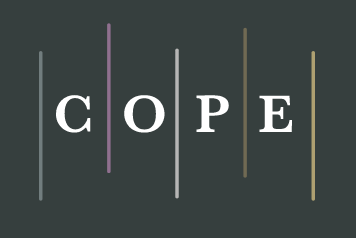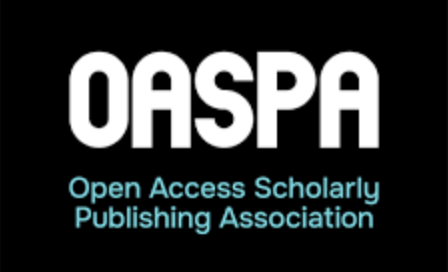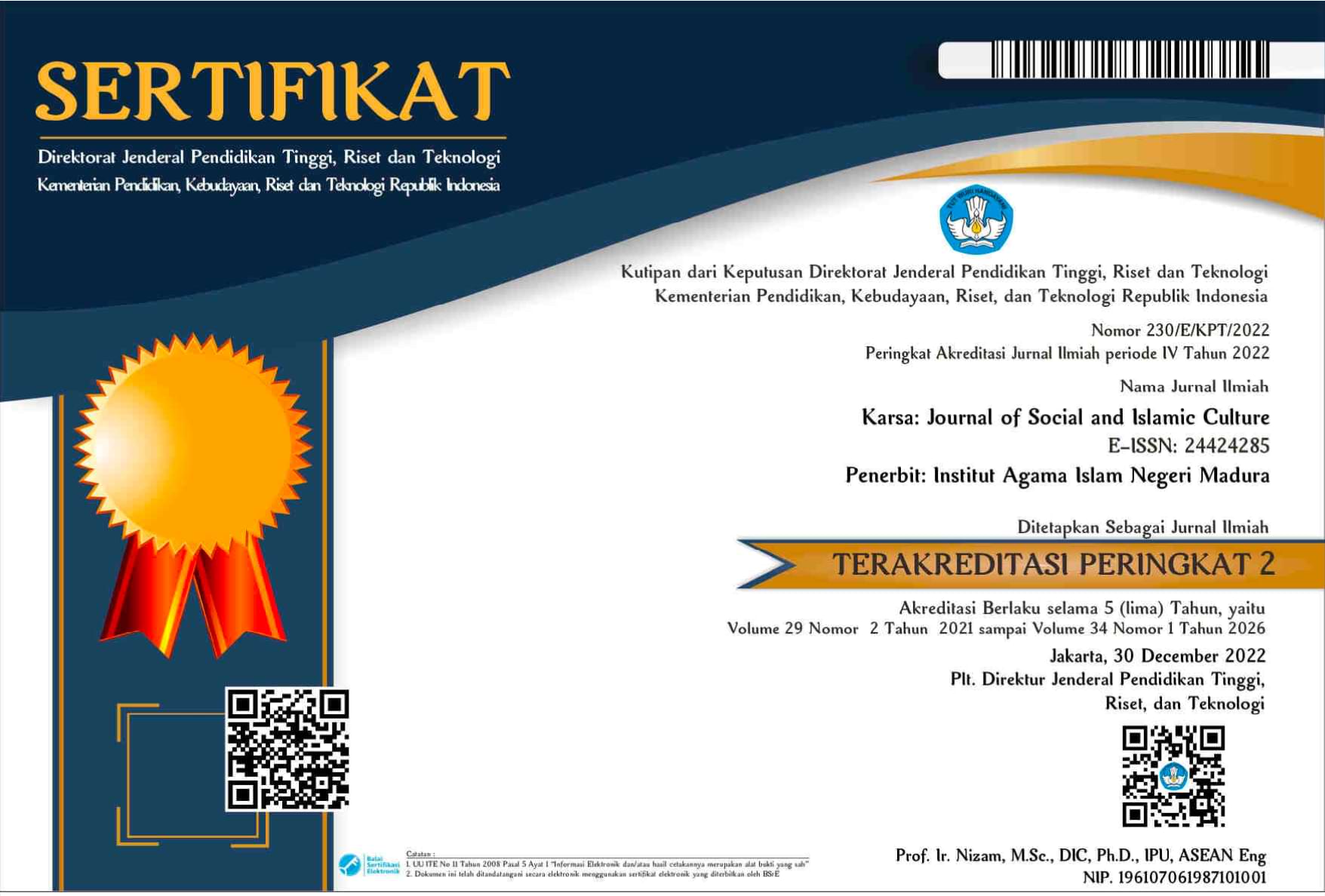Prophetic Communication: Transcendental Dimension In Islamic Philanthropy Messages
 Abstract views: 740
,
Abstract views: 740
,
 PDF downloads: 521
PDF downloads: 521
Abstract
Indonesia Islamic philanthropy had been growing tremendously. Trends in institutions platforms in managing Islamic philanthropy brought the divergence of channel message distribution. Those institutions made convergence interdisciplinary innovation. Islamic philanthropy institutions obligate to distribute the message in an ethical manner. They employed prophetic communication values in engaging the public sphere with persuasive communication commonly. Prophetic communication design is a custom to promote transcendental dimension of contemporary communication praxis. The prophetic term uses the cognition proximity design refers to Prophet Muhammad as a role model. This research was conducted to get an overview of the prophetic communication representation in the Islamic philanthropic messages distribution. Analytical techniques use qualitative document analysis. The subject in this research is the display of text on the site of Islamic philanthropic foundations official website Rumah Zakat, Yayasan Dana Al-Falah, and Lembaga Manajemen Infaq. The theme categories enrich found with selective coding. The results of the analysis are discussed using the concepts of prophetic communication, message production theory, goal-plan-action theory, action-making theory, and cognitive dissonance theory. For further research could obtain from the communication management of more specific philanthropic objects.
Downloads
References
Abdul Hak, Ade, Tine Silvana Rachmawati, Agus Rusmana, and Asep Saeful Muhtadi. “Using Electronic Media and Problems of Prophetic Communication Behavior at UIN Syarif Hidayatullah Jakarta” 154, no. Icclas 2017 (2018): 55–58. doi:10.2991/icclas-17.2018.14.
Ahmad Atabik. “Konsep Komunikasi Dakwah Persuasif Dalam Perspektif Al-Qur’an.” AT-TABSYIR: Jurnal Komunikasi Penyiaran Islam 2, no. 2 (2015): 117–36.
Altheide, David L. “Reflections: Ethnographic Content Analysis.” Qualitative Sociology 10, no. 1 (1987): 65–77. doi:10.1007/ BF00988269.
Brennan, Jason. Libertarianism: What Everyone Needs To KNow. New York: Oxford Unversity Press, 2012.
Bylund, Carma L., Emily B. Peterson, and Kenzie A. Cameron. “A Practitioner’s Guide to Interpersonal Communication Theory: An Overview and Exploration of Selected Theories.” Patient Education and Counseling 87, no. 3 (2012): 261–67. doi:10.1016/ j.pec.2011.10.006.
Cooper, John, Peter Lane, John Cooper, and Peter Lane. “Marketing Communication: Sending the Message.” In Practical Marketing Planning, 133–44, 1997. doi:10.1007/978-1-349-25551-1_11.
Dean, Hartley, and Zafar Khan. “Muslim Perspectives on Welfare.” Journal of Social Policy 26, no. 2 (1997): 193–209. doi:10.1017/S0047279497004972.
Dillard, James Price, and David C. Schrader. “Reply: On the Utility of the Goals-Plans-Action Sequence.” Communication Studies 49, no. 4 (1998): 300–304. doi:10.1080/10510979809368540.
Dogarawa, Ahmad Bello Dogarawa. “Poverty Alleviaton through Zakah and Waqf Institutions: A Case for the Muslim Ummah in Ghana.” SSRN Electronic Journal, 2012. doi:10.2139/ ssrn.1622122.
Fārūqī, Ismā‘īl Rājī al. “THE PRINCIPLE OF THE UMMAH.” In Al Tawhid, 103–28, 2019. doi:10.2307/j.ctvk8w28n.12.
Fill, Chris. Marketing Communications: Interactivity, Communities and Content. Marketing Communications. Essex: Pearson Education, 2014. doi:10.1017/9781315848860.
Florentin, Vindry. “Baznas: Potensi Zakat Di Indonesia Mencapai Rp 217 Triliun | Kabar_puasa | Tempo.co.” Tempo.Co, 2016. https://m.tempo.co/read/news/2016/06/07/151777667/baznas-potensi-zakat-di-indonesia-mencapai-rp-217-triliun.
Greene, John O. “Production of Messages in Pursuit of Multiple Social Goals: Action Assembly Theory Contributions to the Study of Cognitive Encoding Processes.” Annals of the International Communication Association 18, no. 1 (1995): 26–53. doi:10. 1080/23808985.1995.11678906.
Grice, H. P. “Grice (1975)- Logic and Conversation.” In Syntax and Semantics 3: Speech Arts, 41–58, 1975. http://www.com municationcache.com/uploads/1/0/8/8/10887248/logic_and_conversation.pdf.
Hadi, Saiful. “Building Economic Intelligence in the Perspective of Islamic Values through a Family Education in Madura.” KARSA: Jurnal Sosial Dan Budaya Keislaman 24, no. 2 (2016): 205. doi:10.19105/karsa.v24i2.891.
Ihsanuddin. “Baznas: Pembayaran Zakat Di Indonesia Hanya 1,3 Persen Dari Potensi,” 2016. https://nasional.kompas.com/read/ 2016/06/30/11043871/baznas.pembayaran.zakat.di.indonesia.hanya.1.3.persen.dari.potensi. Penulis.
Kochuyt, Thierry. “God, Gifts and Poor People: On Charity in Islam.” Social Compass 56, no. 1 (2009): 98–116. doi:10.1177/0037768 608100345.
Lambarraa, Fatima, and Gerhard Riener. “On the Norms of Charitable Giving in Islam: A Field Experiment.” Düsseldorf, 2012. https://www.econstor.eu/bitstream/10419/59571/1/718795458.pdf.
Leavy, Patricia, and Sharlene Nagy Hesse-Biber. “Historical Context of Emergent Methods and Innovation in the Practice of Research Methods.” In HANDBOOK OF EMERGENT METHODS, edited by Sharlene Nagy Heser-Biber and Patricia Leavy, 17. New York: The Guildford Press, 2008.
Littlejohn, Stephen, Karen Foss, and Julie Yingling. “Communication and Language Acquisition and Development.” In Encyclopedia of Communication Theory, 2012.
Littlejohn, Stephen W, and Karen A Foss. Encyclopedia of Communication Theory. California: Sage Publications, Inc, 2009.
Maghfiroh, Eva. “Komunikasi Dakwah; Dakwah Interaktif Melalui Media Komunikasi.” Dakwatuna: Jurnal Dakwah Dan Komunikasi Islam 2, no. 1 (2016): 34–48.
Marwell, Gerald, and David R Schmitt. “Of Compliance-Gaining Dimensions Behavior : An Empirical Analysis *” 30, no. 4 (2014): 350–64.
Mislikhah, St. “Ar-Raniry: International Journal of Islamic Studies Vol. 1, No.2, Desember 2014 (www.journalarraniry.com) | St” 1, no. 2 (2014): 285–96.
Monzer Kahf. “The Role of Waqf in Improving the Ummah Welfare.” The International Seminar on Waqf as a Private Legal Body, 2003, 1–26. http://monzer.kahf.com/papers/english/ROLE_OF_ WAQF_IN_THE_WELFARE_OF_THE_UMMAH.pdf.
Musa, Armiadi. “Zakat in ‘Qanun’ (Aceh Local Law): The Impact to Zakat Management as the Local Government Original Revenues in Baitul Mal of Aceh [الزكاة في ‘القانون’ (النظام المحلي في آتشيه): تأثير إدارة الزكاة كالإيرادات الأصلية للحكومة المحلية في بيت المال الآتشي].” KARSA: Journal of Social and Islamic Culture 26, no. 1 (2018): 150. doi:10.19105/karsa.v26i1.1832.
Nurdin, Ali. “AKAR KOMUNIKASI DALAM AL-QUR’AN.” Jurnal Kajian Komunikasi 2, no. 1 (2014): 12–26. doi:10.24198/ jkk.vol2n1.2.
Pew Research Center’s Forum on Religion and Public Life. “The Future of the Global Muslim Population.” Pew Research Center, 2011. http://www.pewforum.org/2011/01/27/the-future-of-the-global-muslim-population/.
Rakhmawati, Yuliana. “MADURA :” In MADURA: Masyarakat, Budaya, Media, Dan Politik, edited by Surokim, 117–34. Bangkalan: Elmatera Publishing, 2015.
Ridlwan, Ahmad Ajib, and Raditya Sukmana. “The Determinant Factors of Motivation to Pay Zakat in Regional Amil Zakat Agency of East Java.” KARSA: Journal of Social and Islamic Culture 25, no. 2 (2018): 334. doi:10.19105/karsa.v25i2.1398.
Sauri, Sofyan. “Pendekatan Semantik Frase Qaulan Maysura, Layyina, Dan Karima Untuk Menemukan Konsep Tindak Tutur Qurani,” n.d. http://file.upi.edu/Direktori/FPBS/JUR._PEND._BAHASA_ARAB/195604201983011-SOFYAN_SAURI/jurnal2/PENDEKATAN_SEMANTIK__FRASE__QAULAN_SADIDA.pdf.
Ura, Karma, Sabina Alkire, Tshoki Zangmo, and Karma Wangdi. “A Short Guide to Gross National Happiness Index,” 2012, 104.
Uyun, Qurratul. “Zakat, Infaq, Shadaqah, Dan Wakaf Sebagai Konfigurasi Filantropi Islam.” Islamuna: Jurnal Studi Islam 2, no. 2 (2015): 218. doi:10.19105/islamuna.v2i2.663.
West, Richard, and Lynn H Turner. Introducing Communication Theory: Analysis and Application. Journal of Chemical Information and Modeling. 4th ed. Vol. 53. New York: McGraw Hill, 2010.
Yanti, Fitri. “Meneropong Paradigma Komunikasi Profetik.” Jurnal Ilmu Komunitas Dan Pengembangan 9, no. 1 (2014): 45–56. http://ejournal.radenintan.ac.id/index.php/alummah/article/view/578.
The journal operates an Open Access policy under a Creative Commons Non-Commercial Share-Alike license. Authors who publish with this journal agree to the following terms:
- Authors retain copyright and grant the journal right of first publication with the work simultaneously licensed under a Creative Commons Attribution License that allows others to share the work with an acknowledgement of the work's authorship and initial publication in this journal.
- Authors are able to enter into separate, additional contractual arrangements for the non-exclusive distribution of the journal's published version of the work (e.g., post it to an institutional repository or publish it in a book), with an acknowledgement of its initial publication in this journal.
- Authors are permitted and encouraged to post their work online (e.g., in institutional repositories or on their website) prior to and during the submission process, as it can lead to productive exchanges, as well as earlier and greater citation of published work.



















